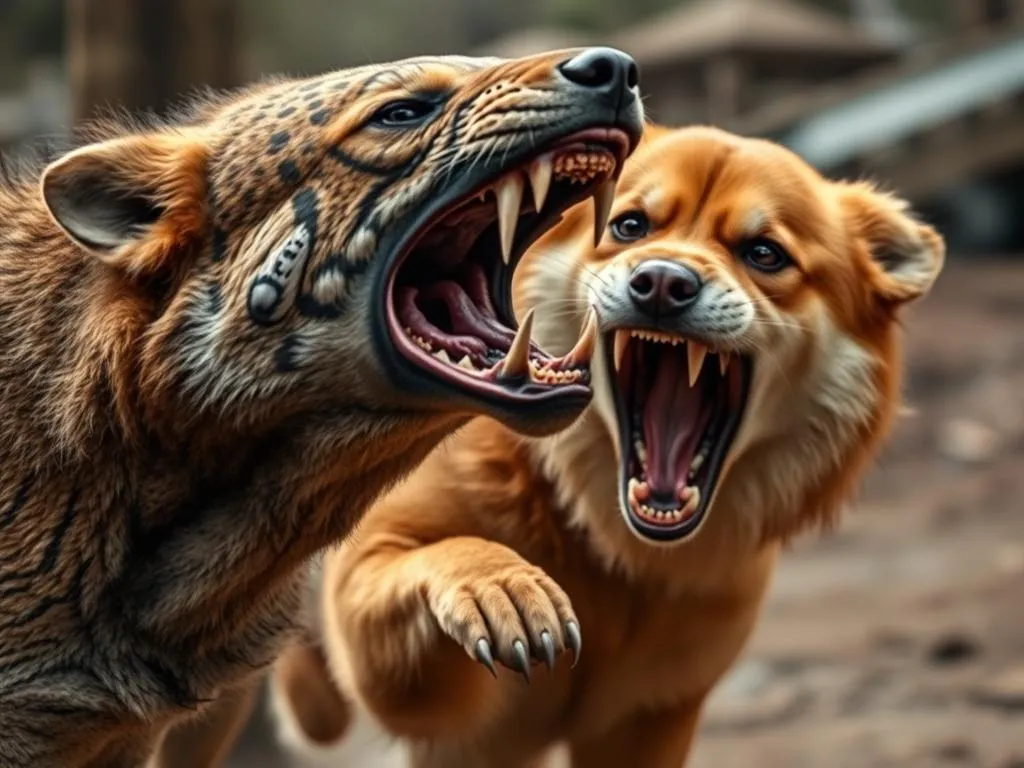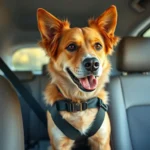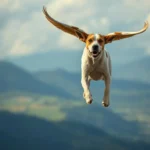
Dogs have been our loyal companions for thousands of years, sharing our homes and lives. However, their instinctual nature and interactions with wildlife can sometimes lead to dangerous encounters. Understanding what animals attack dogs is crucial for every dog owner. It not only helps in recognizing potential threats but also in taking appropriate measures to keep our furry friends safe.
Understanding Dog Behavior in the Wild
The Instinctual Nature of Dogs
Dogs, as descendants of wolves, carry inherent instincts that sometimes draw them into conflict with wildlife. Their predatory behaviors, such as chasing and barking, can provoke wild animals, prompting them to defend their territory or view dogs as a threat or prey. This instinctual nature is deeply rooted in their DNA, influencing how they interact with their environment.
Common Dog Behaviors that May Trigger Attacks
Certain behaviors in dogs can trigger aggressive responses from wild animals. For instance, a dog’s barking can be perceived as a challenge, while a playful chase might be seen as a provocation. Territorial instincts can also play a significant role, particularly when a dog encounters wildlife in its home range. Understanding these behaviors can help dog owners mitigate risks during outdoor activities.
Types of Animals that Attack Dogs
Canine Predators
One of the most significant threats to dogs comes from other canines. Wolves are known to be territorial and may view domestic dogs as intruders. Although wolf attacks on dogs are relatively rare, they can occur, especially in areas where domestic dogs roam free.
Coyotes, on the other hand, are more common and may see smaller dogs as potential prey or competition for food. Their opportunistic nature means they can be brazen, especially in urban settings where food sources are plentiful.
Feline Predators
Mountain lions are formidable predators that can attack dogs, particularly if they perceive them as a threat to their territory or cubs. These large cats tend to inhabit rural and wilderness areas, making encounters more likely in such environments.
Bobcats, while generally smaller, can still pose a risk, especially to small breed dogs. Their stealthy nature allows them to ambush unsuspecting pets, particularly in wooded areas.
Birds of Prey
Birds of prey, such as eagles and hawks, can also be a threat, particularly to small dogs. These raptors are equipped with powerful talons and keen eyesight, allowing them to identify and target smaller animals with precision. There have been specific cases where small breeds, like Chihuahuas or Yorkshire Terriers, have fallen victim to these aerial hunters.
Other Mammalian Predators
Bears can pose a significant threat to dogs, particularly in rural areas where they forage for food. Dogs that bark or chase bears can provoke attacks, especially if the bear feels cornered or threatened.
Foxes typically avoid confrontation with larger animals, but they can be aggressive if they feel threatened or if their young are at risk. Their cunning nature means they can outsmart some dogs, leading to potentially dangerous situations.
Environments Where Attacks are Most Likely
Urban Settings
In urban environments, the risk of encounters with wildlife is often underestimated. Many city parks provide habitats for various animals, including raccoons, coyotes, and even the occasional fox. Dog owners should be vigilant in these areas, as wildlife can become accustomed to humans and may not shy away from interactions.
Rural and Wilderness Areas
In contrast, rural and wilderness areas present different risks. Dogs are more likely to encounter wildlife in these settings, from bears to mountain lions. Owners should exercise caution and awareness when walking their dogs in wooded areas, ensuring that their pets remain within close proximity.
Specific Situations
Certain situations increase the likelihood of encounters with predators. For example, off-leash parks can be a breeding ground for risky interactions, as dogs may wander away from their owners and provoke wildlife. Similarly, hiking and camping with dogs requires extra vigilance, particularly during dawn and dusk when many predators are most active.
Signs of Aggression from Predators
Body Language of Wild Animals
Recognizing the body language of wild animals can be critical in preventing attacks. Signs of aggression include raised hackles, growling, and a stiffened body posture. Understanding these cues can help dog owners identify potential threats early and take appropriate action.
Common Sounds and Signals
Certain vocalizations can indicate a dangerous situation. Growls, howls, and even specific alarm calls from other animals can signal the presence of a predator. Being aware of these sounds can alert dog owners to potential risks in their surroundings.
Protecting Your Dog from Predators
Training and Socialization
Training and socialization are crucial components of keeping your dog safe from wildlife encounters. Obedience training ensures that dogs respond to commands, which can be vital in preventing them from wandering too far or engaging with wild animals.
Socializing your dog with other animals and environments can also help them learn appropriate behaviors, reducing the likelihood of triggering aggressive responses from wildlife.
Equipment and Safety Gear
Proper equipment is essential for dog safety. High-quality leashes and harnesses can prevent dogs from escaping or getting too close to wildlife. Additionally, using GPS trackers can help owners keep tabs on their dogs during outdoor adventures, providing peace of mind in case of an unexpected situation.
Strategies for Outdoor Safety
Keeping dogs on leashes in high-risk areas is one of the simplest yet most effective strategies for preventing encounters with predators. Avoiding certain times for walks, such as dusk and dawn, when many predators are active, can further reduce risks.
Dog owners should also be mindful of their surroundings, staying alert to signs of wildlife activity and choosing safer paths during outdoor excursions.
What to Do if Your Dog is Attacked
Immediate Response
In the unfortunate event of an attack, assessing the situation quickly is vital. If the dog is in immediate danger, you may need to intervene, but caution is crucial to avoid escalating the situation. Using distractions, like loud noises or throwing an object, can sometimes deter the predator.
After the Attack
Once the immediate threat has passed, it’s essential to check your dog for injuries. Basic first aid for your dog can include cleaning wounds and applying bandages. However, seeking veterinary care is advisable, especially if the injuries appear severe or if any bites are present.
Reporting the Incident
Notifying local wildlife authorities about the incident is crucial. This helps them track predator behavior and potentially warn other dog owners in the area. Keeping a record of the encounter, including any details about the animal involved, can also assist in future safety measures.
Conclusion
Awareness of what animals attack dogs and understanding their behaviors is essential for every dog owner. By recognizing the potential threats and taking proactive measures to protect our canine companions, we can ensure a safe and enjoyable lifestyle for both dogs and their owners. Staying informed and vigilant will help reduce risks and foster a harmonious relationship between our pets and the natural world around us.









